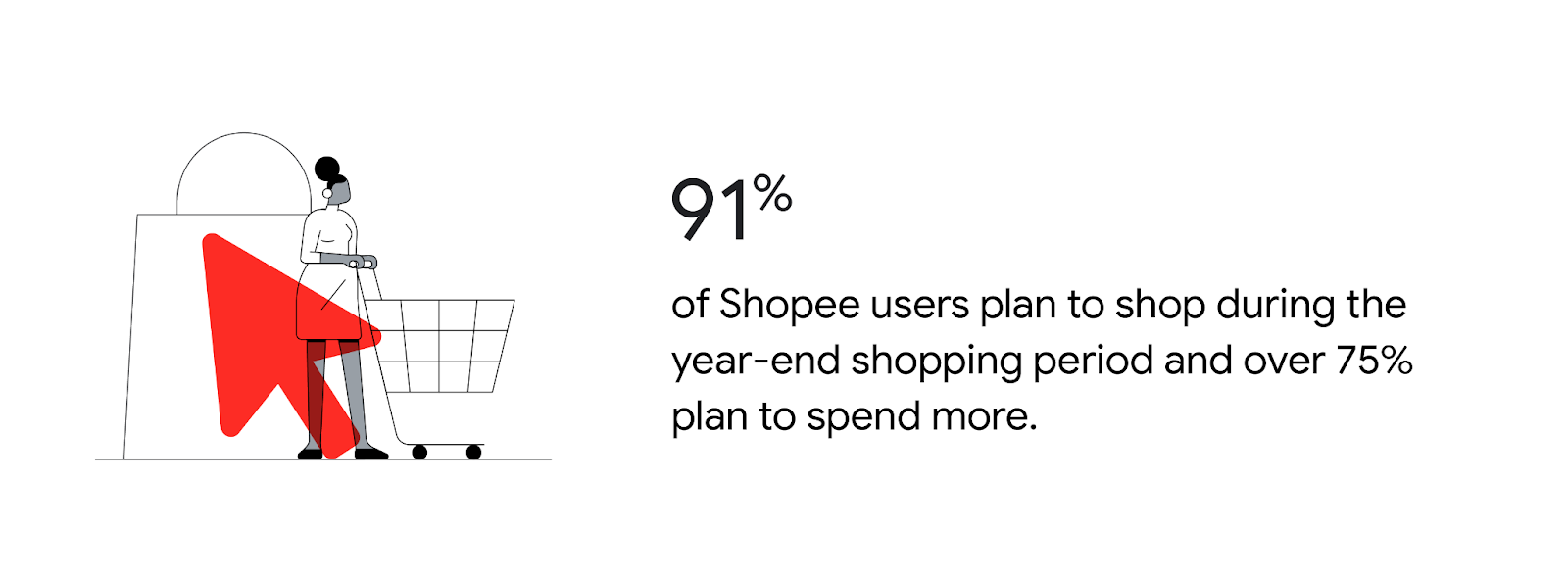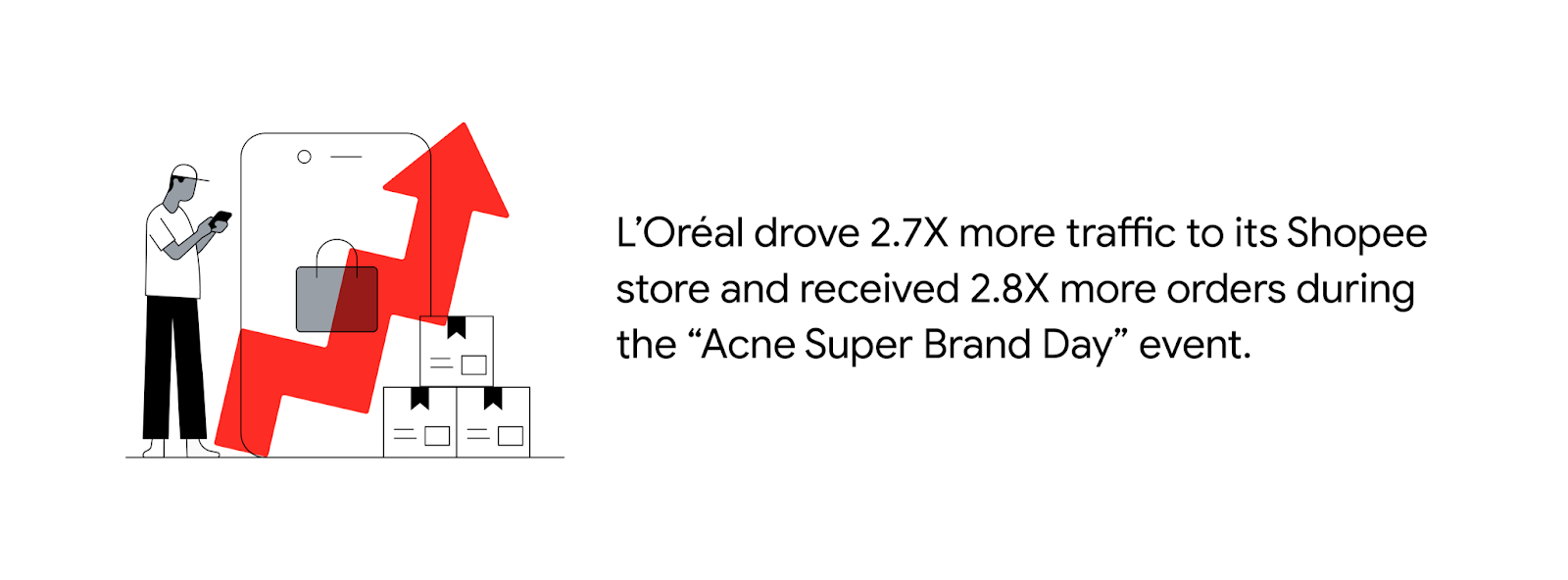Peggy Zhu, head of brand and growth marketing at Shopee shares how its partnership with Google is helping brands optimize their e-commerce advertising.
The surge in digital consumers over the last two years has kept brands on their toes as they strategize for growth. With 60 million new consumers paying for services online in Southeast Asia, brands have had to quickly embrace e-commerce marketing and adopt digital platforms for growth, including third-party e-commerce sites.
E-commerce sites help brands reach both new and existing customers, especially during large sales events and the year-end shopping season. At Shopee, 91% of users plan to shop during the year-end shopping period, and over 75% plan to spend more, but only 45% of shoppers know which brands to buy, leaving room for sellers to influence customers in their purchase journey.1

However, until recently, brands couldn’t easily measure their marketing performance on marketplaces. Without performance data, it’s difficult for them to optimize campaigns, or even know if their e-commerce tracking is effective. So, Shopee partnered with Google to provide brands insights that enable them to make better informed decisions across their e-commerce advertising campaigns and marketplace listings.
Brands can now track conversions across retail platforms
As one of the first marketplace to adopt Google’s Retail Partnerships with Google Ads program, Shopee has enabled brands to have data at their fingertips and know how their Google Ads campaigns are impacting sales on the shopping platform. Armed with these performance insights, brands have been able to quickly optimize their ad campaigns for greater online growth. Already, more than 2,000 brands across Southeast Asia have leveraged this strategic retail partnership for a first-mover advantage in driving marketplace sales.
One of these brands is L'Oréal. The beauty company became the first in Thailand to pilot Google Ads with Shopee via the campaign “Acne Super Brand Day.” Together with Shopee, the company captured high-intent consumers across three of its beauty brands: La Roche-Posay, Vichy, and CeraVe, by driving traffic directly to the Shopee store for each brand.
The L'Oréal team ran Google Shopping ads that leveraged Shopee's product feed to reach people who were browsing and ready to buy. When Shopee users clicked on a CeraVe ad, for example, they were brought directly to CeraVe’s official store on Shopee Mall to make their purchase. This linked the ads to e-commerce performance data, giving the team direct insight into what triggers conversions along customers’ purchase journeys. In turn, the brand was able to use the data to optimize its ad campaign performance. The pilot helped L'Oréal attract 2.7X more traffic across Shopee stores for all three brands and receive 2.8X more orders during the “Acne Super Brand Day” event.

Brands can easily improve campaigns with performance data and automation
Brands can also use Shopee’s Performance Report, powered by Google Analytics 360, to analyze their store metrics and ad performance beyond just conversions. The additional insights, such as marketing budget spent, the popularity of certain products, and how often shopping carts are abandoned, enable brands to make smarter decisions that drive growth. In a 12-month period, sellers who used Google Shopping Ads with Shopee increased revenue growth by 87%.
Shopee also partnered with Google to provide brands with automation solutions such as auto-pausing ads for items with low inventory, and automatically updating product information in ads when product details change on Shopee. This means brands can save on time and effort even as they provide a better customer experience.
By collaborating with Google, Shopee has enabled brands to fill a knowledge gap in their e-commerce marketing efforts. With Shopee’s plug-and-play data, insights, and automation solutions, brands can now easily implement a full-funnel marketplace strategy and optimize performance to meet the growing number of online shoppers.






